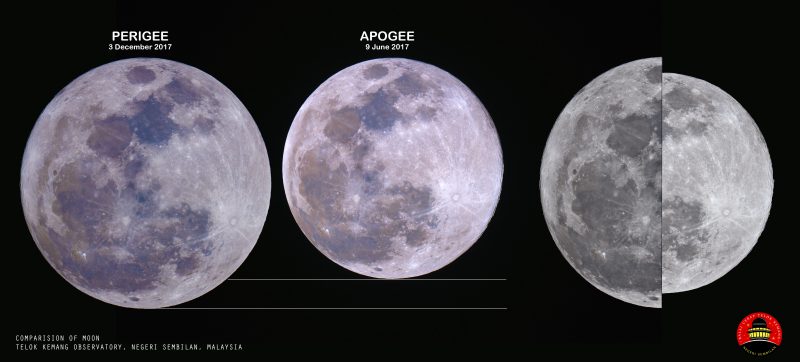🌕S U P E R M O O N🌕
--------------------------------

A supermoon happens when the full moon coincides with the moon's closest approach to Earth in its orbit. Supermoons make the moon appear a little brighter and closer than normal, although the difference is hard to spot with the naked eye. The first supermoon of 2019 was the Super Blood Wolf Moon on Jan. 20-21. The second supermoon occurred on Feb. 19 and a third will follow on March 20.
The term "supermoon" has only been used in the past 40 years, but it received a slew of attention in late 2016 when three supermoons occurred in a row. The supermoon of November 2016 was also the closest supermoon in 69 years, although a closer supermoon will rise in the 2030s.
How a supermoon happens
The moon's orbit around the Earth is not a perfect circle. It has an average distance of 238,000 miles (382,900 km) from Earth, but its apogee and perigee — the closest and farthest approaches from Earth — change every lunar month.
"The main reason why the orbit of the moon is not a perfect circle is that there are a lot of tidal, or gravitational, forces that are pulling on the moon," said NASA's Noah Petro, deputy scientist of the Lunar Reconnaissance Orbiter mission, in a 2016 Space.com interview.
He added that the different gravities of the Earth, sun and planets all have an effect on the moon's orbit. "You have all of these different gravitational forces pulling and pushing on the moon, which gives us opportunities to have these close passes."
Notable supermoons
On Jan. 20-21, 2019, the supermoon coincided with a lunar eclipse. Lunar eclipses occur when the Earth is exactly between the sun and the moon. The moon shines brown-red because the only light it receives is reflected from Earth.
Advertisement
The end of 2016 saw three supermoons in a row in October, November and December. But it was the Nov. 14 one that got the most attention because it was the closest supermoon in recent memory. The moon's perigee was 221,524 miles (356,508 kilometers) from Earth, making it the closest full moon to Earth in 69 years — specifically, since the supermoon of Jan. 26, 1948.
An even closer full moon took place in January 1912; it was roughly 100 kilometers nearer to Earth than in November 2016. But skywatchers who are around in November 2034 will get a special treat, as that moon will be even closer than both the 1912 and 2016 moons.

Supermoon's Appearance
A full moon at perigee appears roughly 14% larger in diameter than at apogee.Many observers insist that the moon looks bigger to them. This is likely due to observations shortly after sunset when the moon is near the horizon and the moon illusion is at its most apparent.
While the moon's surface luminance remains the same, because it is closer to the earth the illuminance is about 30% brighter than at its farthest point, or apogee. This is due to the inverse square law of light which changes the amount of light received on earth in inverse proportion to the distance from the moon. While a typical summer full moon at temperate latitudes provides only about 0.05-0.1 lux, a supermoon directly overhead in the tropics could provide up to 0.36 lux.

Supermoon's Effect on Earth
Claims that supermoons can cause natural disasters, and the claim of Nolle that supermoons cause "geophysical stress", have been refuted by scientists.
Despite lack of scientific evidence, there has been media speculation that natural disasters, such as the 2011 Tōhoku earthquake and tsunami and the 2004 Indian Ocean earthquake and tsunami, are causally linked with the 1–2 week period surrounding a supermoon.A large, 7.5 magnitude earthquake centred 15 km north-east of Culverden, New Zealand at 00:03 NZDT on November 14, 2016, also coincided with a supermoon.
Scientists have confirmed that the combined effect of the Sun and Moon on the Earth's oceans, the tide, is greatest when the Moon is either new or full. and that during lunar perigee, the tidal force is somewhat stronger, resulting in perigean spring tides. However, even at its most powerful, this force is still relatively weak, causing tidal differences of inches at most.
Tidak ada komentar:
Posting Komentar